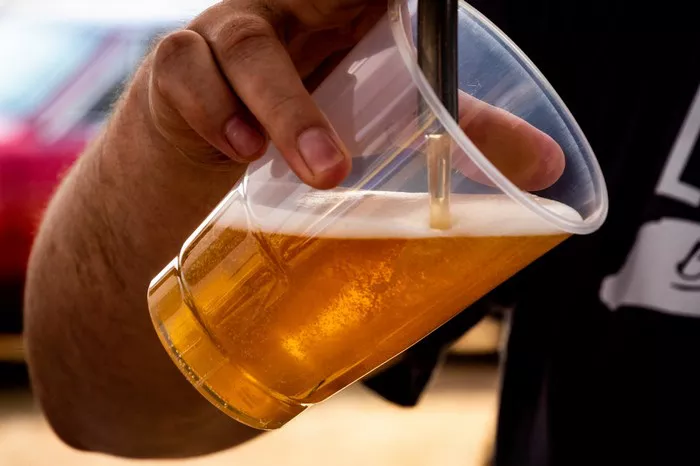In the realm of social gatherings and leisure activities, beer stands as one of the most popular alcoholic beverages consumed worldwide. However, the question of “how much alcohol in 1 pint of beer” often arises, prompting a deeper exploration into the alcohol content of this beloved beverage. Understanding the nuances of alcohol concentration in beer is not only informative but also crucial for responsible consumption. This article delves into the factors influencing the alcohol content in a pint of beer, its variations across different types of beer, and the implications for drinkers.
Alcohol by Volume (ABV): A Key Metric
When discussing the alcohol content of beer, one must first grasp the concept of Alcohol by Volume (ABV). ABV represents the percentage of alcohol present in a given volume of liquid. It serves as a standardized measure across various alcoholic beverages, facilitating comparisons and informed choices. Understanding ABV is essential in determining “how much alcohol in 1 pint of beer” as it directly influences the beverage’s potency.
Variability Across Beer Types
The alcohol content in one pint of beer varies significantly depending on the type of beer being consumed. Lager, ale, stout, and other beer varieties each possess distinct ABV ranges, contributing to diverse drinking experiences. Lager, for instance, typically has a lower ABV compared to ale. Understanding these variations is paramount for consumers seeking to moderate their alcohol intake and tailor their beverage selection to personal preferences.
Factors Influencing Alcohol Content
Several factors influence the alcohol content in one pint of beer, ranging from ingredients to brewing techniques. The primary ingredients in beer – water, malt, hops, and yeast – play pivotal roles in determining ABV. The type and quantity of malt used, fermentation duration, and temperature all affect alcohol concentration. Additionally, brewing methods such as dry hopping or barrel aging can impart unique flavors and alter ABV levels, adding complexity to the final product.
See Also: What Does Hoegaarden Beer Taste Like?
Understanding Beer Labeling
Navigating the intricacies of beer labeling can provide valuable insights into its alcohol content. Many beer labels prominently display the ABV percentage, offering consumers transparency and informed choice. However, deciphering beer labels can be challenging for the uninitiated, especially when confronted with unfamiliar terminology or brewing jargon. Familiarizing oneself with common labeling conventions empowers drinkers to make educated decisions regarding “how much alcohol in 1 pint of beer.”
Standard Beer ABV Ranges
While individual beer recipes may deviate from the norm, certain standard ABV ranges exist for different beer styles. Lager, characterized by its crisp and refreshing taste, typically ranges from 4% to 6% ABV. Ale, encompassing a broader spectrum of flavors and aromas, often boasts a slightly higher ABV, typically falling between 5% and 7%. Strong ales and specialty brews can exceed these ranges, offering more potent options for seasoned drinkers.
Craft Beer and ABV Innovation
The craft beer revolution has ushered in an era of experimentation and innovation in brewing, resulting in an abundance of unique beer styles and flavor profiles. Craft breweries frequently push the boundaries of traditional brewing practices, including ABV levels. From sessionable session ales with ABV as low as 3% to imperial stouts exceeding 10% ABV, craft beer enthusiasts can explore a vast landscape of alcohol content and taste experiences.
Moderation and Responsible Consumption
Amidst discussions of “how much alcohol in 1 pint of beer,” the importance of moderation and responsible consumption cannot be overstated. While beer can be enjoyed as part of a social occasion or personal relaxation, excessive intake poses health risks and societal consequences. Understanding one’s alcohol tolerance, pacing consumption, and prioritizing hydration are key strategies for responsible drinking. Moreover, supporting initiatives promoting alcohol awareness and education fosters a culture of moderation and mindfulness within the beer community.
Health Considerations
In addition to its social and cultural significance, beer consumption also raises health considerations related to alcohol intake. Excessive alcohol consumption can lead to various health issues, including liver disease, cardiovascular problems, and mental health disorders. Understanding the alcohol content in one pint of beer allows individuals to monitor their intake and make informed choices aligned with their health goals. Consulting healthcare professionals for personalized advice and support is advisable, especially for individuals with pre-existing health conditions or concerns.
Legal and Regulatory Framework
The regulation of alcohol content in beer falls within the purview of governmental agencies responsible for overseeing food and beverage standards. These agencies establish legal requirements and guidelines governing labeling, production, and distribution of alcoholic beverages. Compliance with these regulations ensures consumer protection and promotes transparency within the industry. Additionally, initiatives aimed at preventing underage drinking and reducing alcohol-related harm contribute to a safer and healthier drinking environment.
Conclusion
In conclusion, answering the question of “how much alcohol in 1 pint of beer” requires an understanding of various factors influencing alcohol content, including brewing techniques, ingredients, and beer styles. While ABV serves as a standardized measure, the diversity of beer offerings allows for a wide range of drinking experiences. Embracing moderation, responsible consumption, and awareness of health considerations are essential for enjoying beer safely and sustainably. By fostering a culture of informed choice and mindfulness, individuals can derive maximum enjoyment from their beer while prioritizing their well-being.


